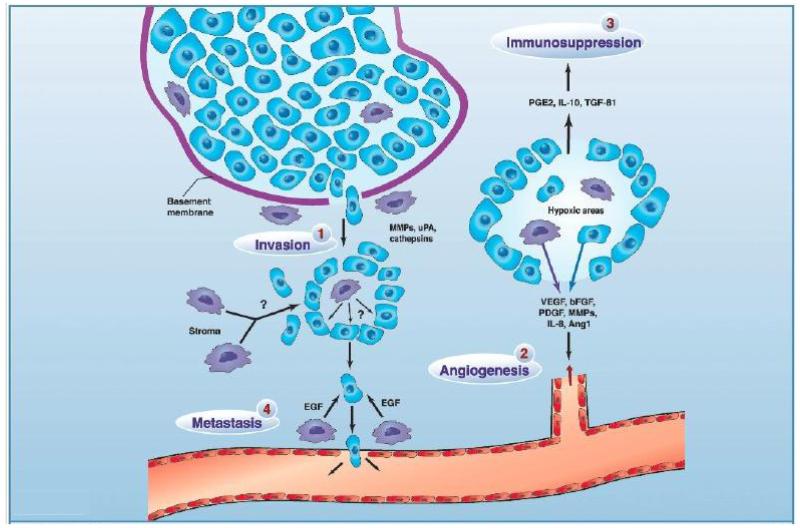FIGURE 3.
The role of different TAM subpopulations in tumor progression. 1, invasion: TAM secrete a variety of proteases to breakdown the basement membrane around areas of proliferating tumor cells (e.g., ductal carcinoma in situ in the breast), thereby prompting their escape into the surrounding stroma where they show deregulated growth. 2, angiogenesis: In areas of transient (avascular) and chronic (perinecrotic) tumor hypoxia, macrophages cooperate with tumor cells to induce a vascular supply for the area by up-regulating a number of angiogenic growth factors and enzymes. These diffuse away from the hypoxic area and, together with other pro-angiogenic stimuli in the tumor microenvironment, stimulate endothelial cells in neighboring, vascularized areas to migrate, proliferate, and differentiate into new vessels. 3, immunosuppression: Macrophages in hypoxic areas secrete factors that suppress the antitumor functions of immune effectors within the tumor. 4, metastasis: A subpopulation of TAM associated with tumor vessels secretes factors like epidermal growth factor (EGF) to guide tumor cells in the stroma toward blood vessels where they then escape into the circulation. TAM secrete growth factors in the stromal compartment to stimulate tumor cell division and/or undefined factors that promote tumor cell motility. Reprinted with permission from reference42.

